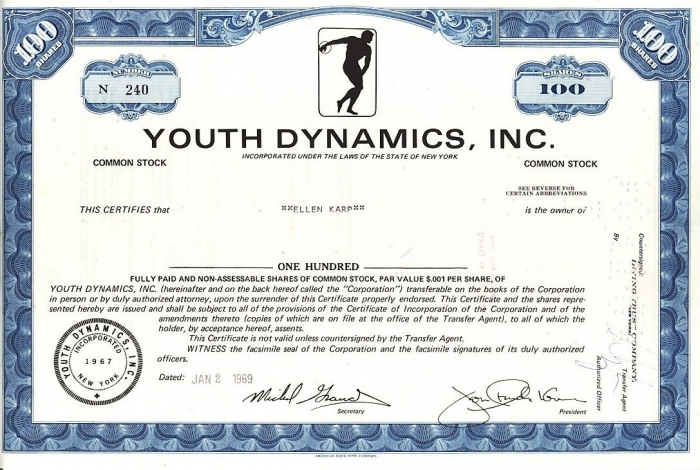When an investor decides in which securities it is better to invest his assets, he should take into account a number of factors: ability to earn, availability of real estate, size of loans, other sources of income. Stock and bond - what to choose?

Financiers recommend investing in stocks to young investors. And when retiring, the choice of bonds will be more reasonable. There is nothing surprising here. Upon retirement, the bonds will provide the investor with income comparable to receiving wages.
So what are stocks and bonds? What are their types? What are the differences? Let's start with the question of what a stock is.
Definition
Equity security, talking about the contribution of the owner to the authorized capital of the company and giving him the right to receive a percentage of profits (dividends) from the activities of this company is called a stock.
The owner of shares, in addition to his percentage of profit, is vested with the right to participate in the activities of the company, manage, own part of the property, if the joint-stock company is subject to liquidation.
What are the promotions
These papers can be divided into two types. What ordinary share like? This security gives the holder the right to participate in the meeting of shareholders, voting and participation in the distribution of income received for the reporting period. Typically, the board of directors determines the size and distribution of dividends that are paid from the net income of the company.

What is a preferred share? This paper can provide its holder with some additional rights to manage the enterprise and fixes a fixed amount of the profit that the holder receives in the form of dividends. The latter for preferred securities may be paid from other sources, if this is prescribed in the Charter of the company.
Preferred Paper Types
What is a deferred dividend stock? This type is issued only for the founders of the company. Income on such securities is not paid until the dividend on ordinary shares reaches its maximum value, fixed in the Charter of the company. What other stocks are there? Read on.
What is an eligible promotion? When the annual profit of the company is large, and the size of dividends on ordinary securities is higher than those on preferred securities, then holders of securities with the right to participate receive the same dividend as owners of ordinary ones.
There are also convertible and non-convertible shares. The first can be exchanged for ordinary in the specified period.
What is a cumulative and non-cumulative action? At the end of the year with losses, the company cannot pay the percentage of income on preferred securities. In this case, cumulative securities allow accumulating the amount of dividends and upon receipt of profit by the Company they will be transferred in full. For non-cumulative dividends not received in previous years, in later periods are not paid.
Distinction between common and preferred shares
When comparing these two types of securities, it becomes clear that ordinary shares are more attractive to strategic investors. They are eager to buy a controlling interest in managing the company, and they are not very interested in the size of dividends. Why buy stocks of this particular type? They are aimed at owning a company.
Preferred stocks are of more interest to investors who value dividends. After all, they will be paid in any case, regardless of the results of the company's profitability. However, this is also their minus.The percentage of profit on such shares is a fixed amount, and when the company receives superprofits at the end of the year, the owners of these shares are still content with a predetermined amount. At this time, holders of ordinary securities will make a big profit.
How to release
In order for the shares of the company to be able to participate in exchange trading, it is necessary to go through the registration procedure, or listing in another way. This will give the company the opportunity to attract additional capital, which is so necessary for development, increase competitiveness and receive additional advertising through the information channels of the exchange.

Cost
Securities of this type have a nominal price and a market price. Denomination - the amount of money indicated on it and showing which part in the authorized capital corresponds to one share. Market price - the amount for which the stock is sold and is currently bought on the market. For example, Gazprom shares have been issued since 1998 face value 5 rubles. The price of one such security today is around 140 rubles.
We figured out what a stock is. A definition of this type of paper has also been obtained. It's time to move on to another form - bonds.
What is it
Bonds are debt securities that give the holder the right to receive a certain amount of money from the issuer.
In simple terms, a bond is IOU. She confirms that the one who issued it took a certain amount of money from the holder and undertakes to repay it after a certain time with interest.

This type of securities is stable and has low risks, thus it is convenient for investment. Their profitability can be determined even before making a purchase. An investor can calculate income in advance and assess risks.
Main types
There are many characteristics of bonds that allow them to be divided into types. Here are the main ones.
Type of issuer subdivided bonds into:
- Corporate (enterprises issue).
- Foreign (foreign borrowers are responsible for the issue).
- Municipal (issued by local authorities).
- State (the only one that can issue is the Bank of Russia).
By maturity, bonds are divided into:
- Perpetual (they do not have a maturity period, they give the right to receive interest without repayment of the principal debt amount).
- Long-term (extinguished after five years or later).
- Medium-term (from one year to five years).
- Short-term (from three to twelve months).
The ownership procedure allocates bonds:
- Registered - the name of the owner is registered in the security, and the issuer makes the corresponding entry in the registration book.
- Bearer - any person can present for payment.
The loan repayment form divides all bonds into:
- Natural.
- Cash.
The nature of the appeal is divided into:
- Non-convertible - exchange for other securities is not possible.
- Convertible - give the holder the right to exchange the bonds for other securities of the same issuer, for example, shares, after some time.
The form of payment of income allows you to subdivide bonds into:
- Floating rate paper. The income percentage is tied to a financial indicator (refinancing rate, for example). When the indicator changes, the income percentage also changes.
- Fixed rate papers. The interest paid is negotiated in advance, and payments are made at certain intervals (twice a year or otherwise).
- Bonds of mixed type. Such securities give the holder the right to receive income for some time at a fixed rate, and later at a floating rate.
- Discount bonds. No interest is paid on this paper. Income is obtained on the basis of discount (price difference). This security is sold at a price below the nominal (a paper worth 1,000 rubles is sold for 800), and upon maturity the difference will be income.
Stock and bond. Differences
The difference is already visible in the definitions. A bond is a debt paper.When purchasing bonds, the investor lends a certain amount in debt and becomes a creditor, for which he then receives his income.
When buying shares, the holder becomes the owner of the enterprise’s share, in fact, he will be the owner and will be able to take part in the management.
When buying securities, whether stocks or bonds, the investor should carefully study the issue, look at the indices, analyze the yield and only then make decisions.








